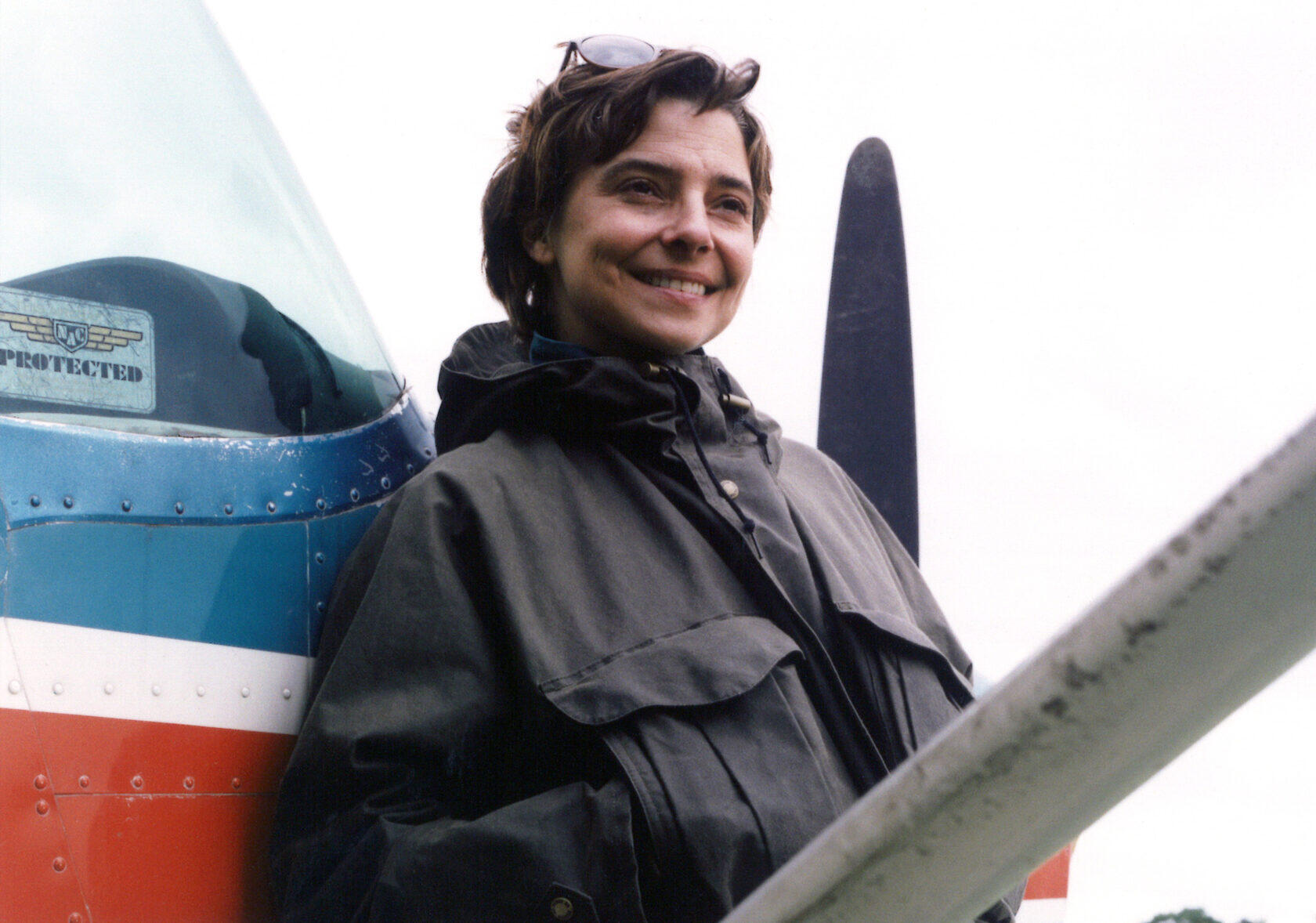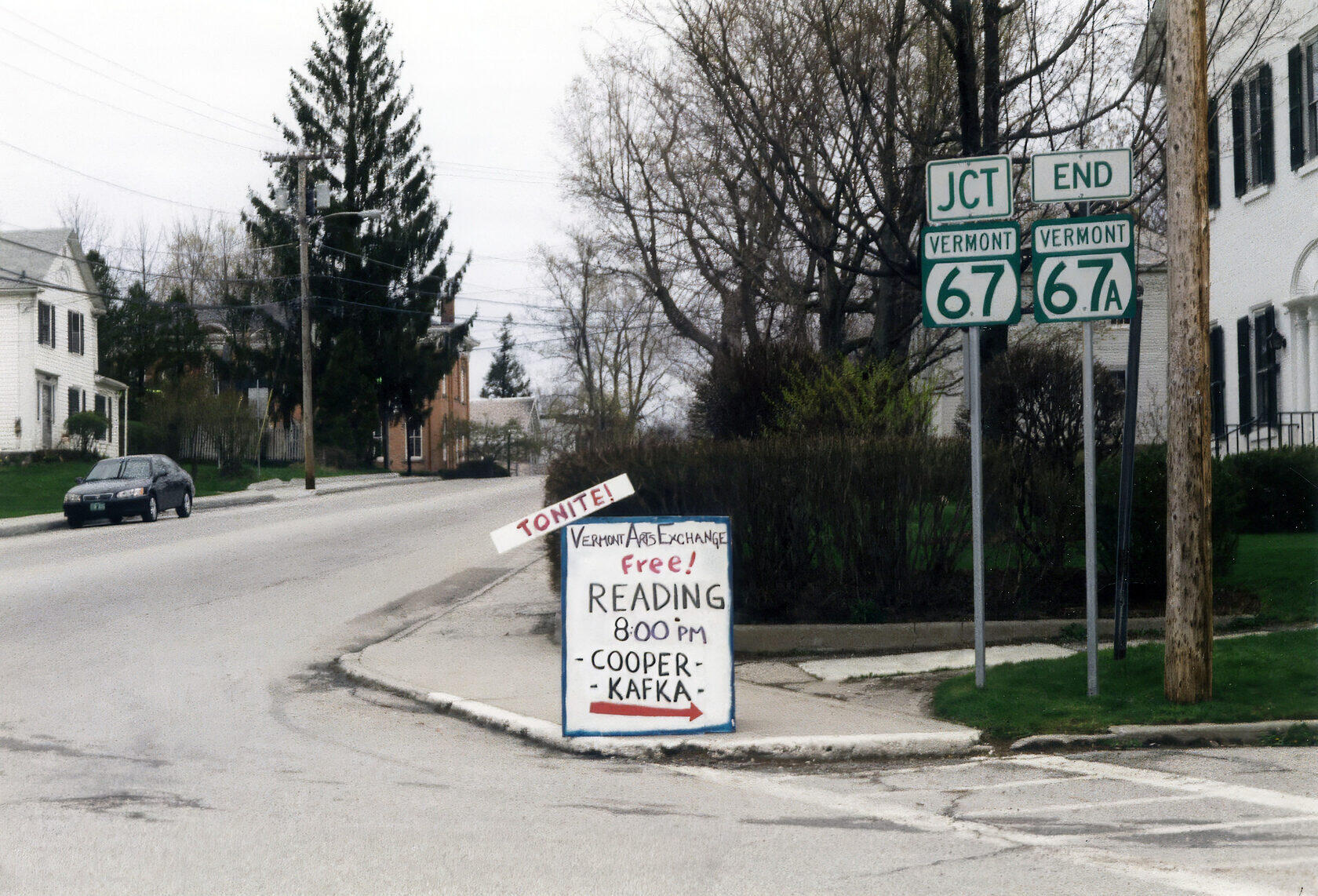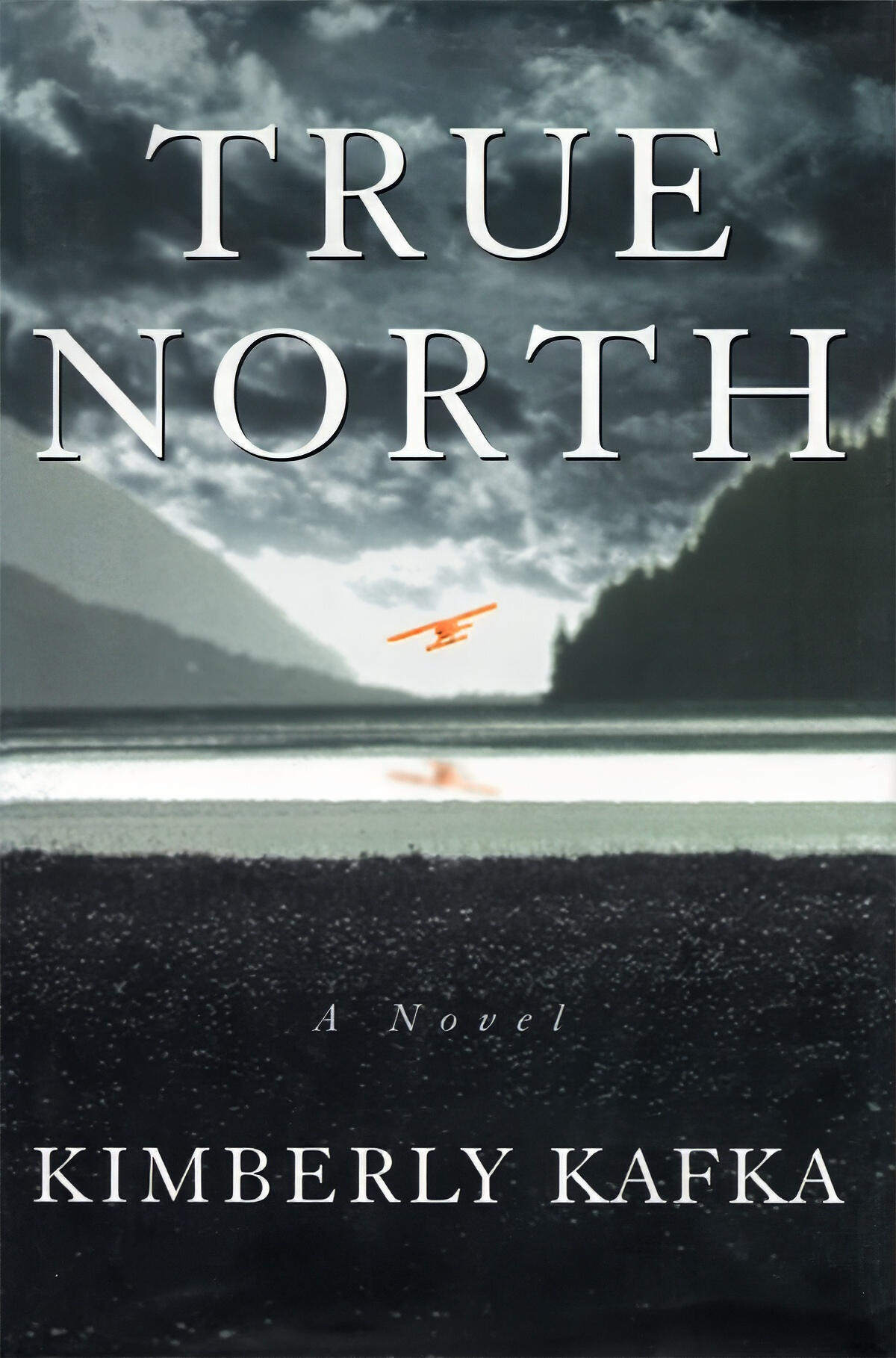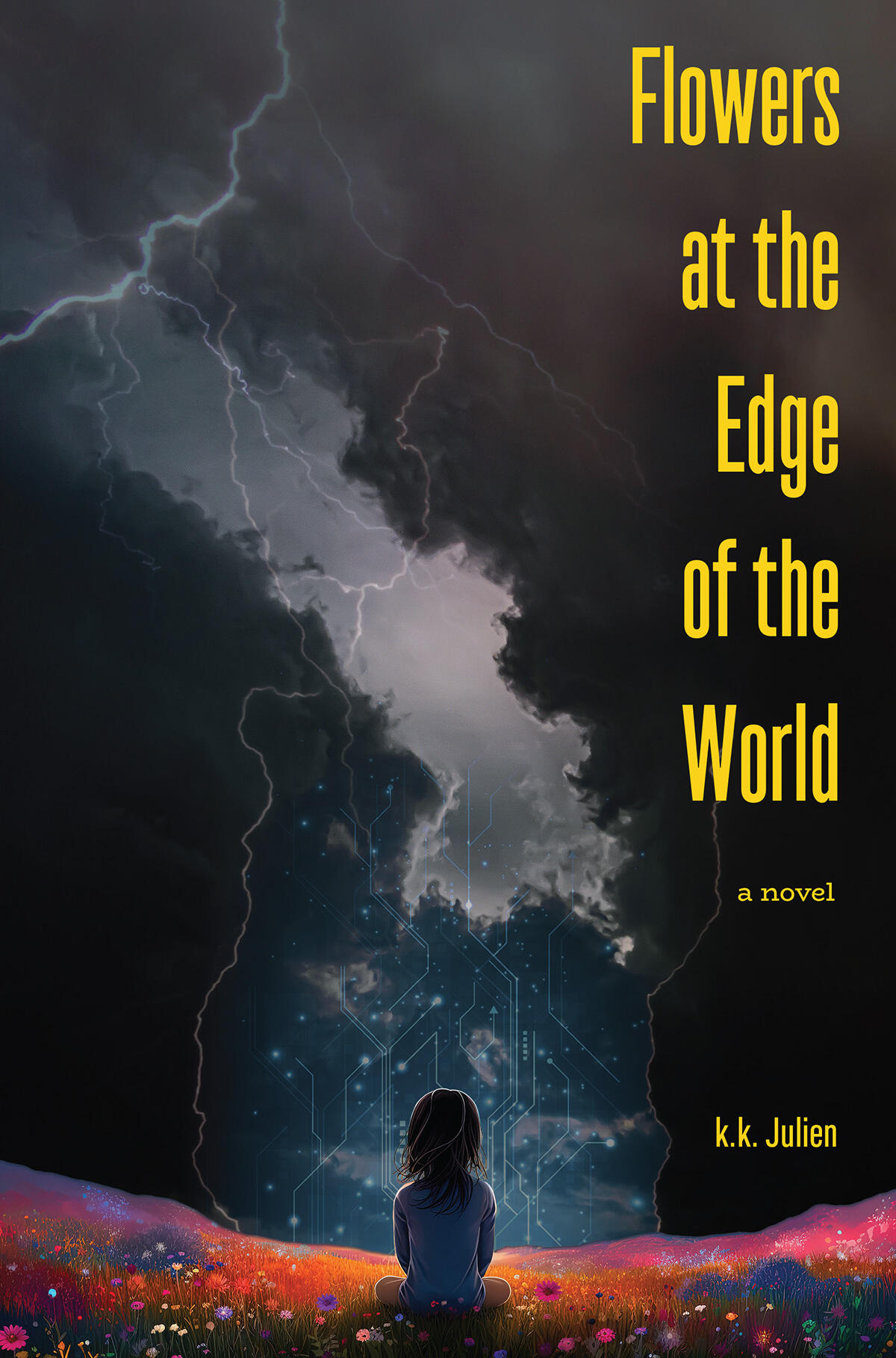Kimberly Kafka author
Kimberly Kafka was raised by two military pilots and a couple of wolves. She published two novels, True North and Miranda’s Vines (Dutton). She lives, writes, edits, and eats very well in Wisconsin thanks to a magnificent family of loving friends. She is not a licensed pilot.

Books books books!
At work at Driftless Books and Music
True North in the movies
Kim's first novel, True North, makes an appearance in Alvin & the Chipmunks


Kim with her brother's Cherokee
Photo by John Barry
Vermont book reading
Reading with friend Wyn Cooper in N. Bennington


Kim and a furry friend
Kim with her warrior princess, Schoodic
Published Work

True North
(Dutton, 2000)
For six years Bailey Lockhart has lived alone in the Alaskan bush, supporting herself from the cockpit of a floatplane. She is the only white woman in a land owned by the local Ingalik tribe; her closest neighbor is a fellow bush pilot and activist named Kash. Bailey and Kash are drawn to each other, but their fiercely independent natures keep them apart. When two Easterners hire Bailey to pilot them into the bush, a series of events is set in motion that will upset the delicate racial balance of the land and lead to violence. As the truth behind the couple's arrival becomes apparent, the refuge Bailey has created for herself shatters. Forced to face the demons of her unresolved past, she is given a chance to free herself at last from the secret that haunts her. Marked by spare, resonant prose and imbued with an indelible sense of place, True North tells a powerful story of adventure and survival.ReviewsHow everyone goes about surviving the climate is entertaining. Kimberly Kafka makes Bailey come alive in the cockpit of her red Cessna… but the real story is the sneaky tourists and the criminal elements, human and otherwise, they arouse. New York Times Book Review, April 2, 2000.True North builds to the raw conflict between Indians and Whites in modern day Alaska. In True North, the landscape looms, but more as a state of mind. Kimberly Kafka’s focus is on the community: that essential organism that individuals in extreme environments depend on. Los Angeles Times, March 19, 2000.In Kafka’s unblinking thriller… racial and political tensions are nicely wrought, but it’s the authentic descriptions of the desolate Alaskan bush that really elevate this first novel. Grade A-minus. Entertainment Weekly, Summer double issue, 2000.True North is an adventure story with a difference. You don’t rush headlong toward a conclusion but linger slowly over the evocation of place and character. Patience pays off as suspense builds. Midway, this novel becomes a page-turner. Sensitive and insightful. The landscape is even more sharply drawn in terse but powerful prose that wastes nothing. USA Today, March 23, 2000.In Kimberly Kafka’s riveting first novel, True North, the Alaskan frontier is blinding beauty and unforgiving beast. What really drives True North and gives it substance is the almost constant suspense, whether between man and woman, bear and human, gold panner and river, or native and white person. There’s always the background of Alaska itself—remote, grand, and dramatic. Boston (Sunday) Globe, March 13, 2000.In beautiful prose, Kimberly Kafka tells a tale that moves through a series of stirring action scenes toward an inevitable clash. True North is a good old-fashioned tale of courage, lust and gold rush fever set in Alaska’s wilderness. Boston Herald, April 2, 2000.Alaska’s magnificently unyielding landscape is a palpable force in Kimberly Kafka’s earthy first novel, True North, *but the wilderness never overwhelms her protagonists. Elle, March 2000.This compelling literary adventure will take you on a wild ride. Glamour, March 2000.

Miranda’s Vines
(Dutton, 2004)
From the acclaimed author of True North comes a moving novel about unexpected destinies and the timelessness of true friendship, set in Oregon’s scenic wine country.Hailed by reviewers from coast to coast, True North marked the exhilarating debut of Kim Kafka’s writing career. Now Kafka takes us to another captivating corner of the world, as seen through the eyes of a remarkable young mother named Miranda Perry. Miranda has risen to the top of San Francisco’s competitive culinary world, and investors are willing to help her launch her own restaurant. She is also a successful single parent, building an endearing relationship with her little boy, Ruben. But her life suddenly takes a different turn when she learns that her father has died, leaving the family vineyard to Miranda. Returning to Oregon, she leaves city life behind her. An adventuresome lifelong friend, Bridie, soon joins Miranda in Oregon after sustaining a debilitating injury. By returning to their roots, both women find unforeseen healing and hope, while helping each other through the challenges of accepting fate.Lyrical yet explicitly perceptive, Miranda’s Vines weaves an unforgettable portrait of survival—both physical and emotional—with the rich textures of vineyard life.ReviewsKafka describes the landscapes of Oregon and Alaska with great warmth and authority. Readers who like to cheer on the underdog will relish this tale of grit and determination in the face of daunting circumstances. Publishers Weekly, Jan 26, 2004.A deeply felt second outing (after True North, 2000) about lovely old-fashioned things like character, commitment, and quiet courage. Carefully written, seamlessly plotted, wine-country background fully realized. Kirkus Reviews, Oct 15, 2003.In this lustrous tale of loyalty and devotion, Kafka limns the depths of intimacy and explores the nature of relationships, from mother to son, father to daughter, neighbor to stranger, and friend to friend. In Kafka’s sensitive hands, Miranda’s compassion is heralded with insightful grace and understanding in a sublime account of personal and emotional challenge and growth. Booklist, Dec 15, 2003.

Flowers at the Edge of the World
(Ramshackle Press, 2024)
Science fiction from Kimberly, with co-author Alec Julien.What would you do if you were a brilliant scientist with nearly unlimited resources, and you knew that humanity was facing an extinction-level set of events? You'd probably put all your resources into trying to ensure that humans might survive and thrive in Earth’s coming inhospitable new age.Jin Singh does just that. His goal: Actualize a neo sapiens genome that is ecologically resilient, altruistic, and rational to a high degree, so as not to repeat the selfish, irrational path taken by homo sapiens through the previous millennia. On Jin’s team are renowned visionary molecular biologist and wife, Kat Fairchild, their mysterious eight-year-old daughter Daisy, Daisy’s new bodyguard Mira, two extraordinary quantum AIs, a handsome Romanian hacker, and a squad of First Nation scientists and engineers.Silas Hobbes, another brilliant scientist with nearly unlimited resources, has a very different idea about the future of humankind. He is engineering a warrior race, engineered to survive ruthlessly at any moral cost. Hobbes doesn't think there’s room for more than one type of neo sapiens in the new world.Both teams race towards their own solutions, with intrigue and action to spare.Brimming with cool tech, high-minded science, plenty of action, and philosophical depth, Flowers at the Edge of the World is an engaging read and a fast-paced adventure.ReviewsFlowers at the Edge of the World is so original in its conception and so strong in its execution that it might well be a game-changer for the genre of speculative fiction. And it’s important to note that it’s not so futuristic as all that; many of its speculations have already come to pass, and may be irreversible — if no one can imagine, and enact, some sort of different way forward. Madison Smartt Bell, 2024.Flowers will take you places that you've never been, with characters who are unique and complex. The science feels real and entirely possible in the not so distant human future. Well written and fairly fast-paced, you'll need to pay attention right up until the end. A joy for those of us who enjoy this genre! Brandy Smith-Vuich, 2024.
Contact Kimberly
© 2024, Kimberly Kafka. All rights reserved.